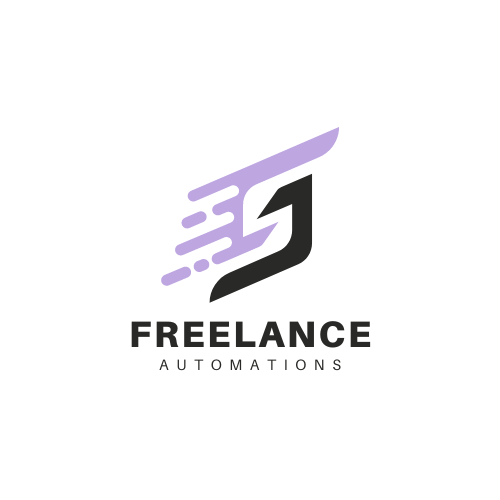Understanding the Frustrations of Upwork Freelancers with Client Taste

Many freelancers on platforms like Upwork have experienced the frustrating phenomenon of clients who insist on design choices that seem to lack taste, aesthetic sense, or professional judgment. The common sentiment is that these clients often request designs that appear to contradict their own briefs—offering feedback that can drive creatives to the brink of exasperation.
This frustration manifests itself in scenarios where the client demands a “modern” design, yet reacts negatively when presented with a polished, contemporary aesthetic. Such contradictory requests are not unique but rather emblematic of a broader struggle between client expectations and the professional insight of the freelancer.
As the freelance design community navigates these challenging dynamics, it becomes essential to address the root of the issue: the role of client education and understanding the principles of good design.
Upwork Freelancers: Battling Client Expectations

The challenge many Upwork freelancers face is the disparity in understanding design principles between themselves and their clients. Designers often possess a rich background in aesthetics, typography, and color theory, yet clients—particularly those not well-versed in design—may not recognize the value of these elements in creating an impactful design.
Key aspects to consider include:
– Clients may rely on outdated templates and styles, leading to bland results that do not reflect their brand effectively.
– The mismatch in communication styles often leads to misunderstandings and questionable critiques. Client feedback can swing from praise about a design being “too modern” to a lack of engagement with unique concepts.
– The fear that high-quality design may alienate consumers is a genuine concern yet frequently misguided.
Freelancers must navigate these waters carefully, balancing professional insight with client satisfaction.
Educating Clients: The Upwork Path to Better Design

Educating your clients is essential for improving communication and establishing a shared understanding of creative strategies. Here are some key tactics for freelancers on Upwork:
1. **Communicate Effectively**: Clear, concise, and consistent communication helps in dispelling misconceptions.
– Avoid jargon; instead, use relatable examples that highlight your point.
– Incorporate visuals that demonstrate the stark contrast between good and bad design choices.
2. **Set Expectations Early**: At the project outset, clarify the potential challenges and ensure the client understands your design philosophy.
– Discuss common design misconceptions that may come up during the project lifecycle.
– Encourage questions to promote an open dialogue about creative decisions.
3. **Provide Educational Materials**: Consider offering resources that explain design principles and aesthetics in layman’s terms.
– Create a simple guide on color theory or typography and its relevance to branding.
– Share inspirational content that showcases the benefits of high-quality design.
4. **Manage Revisions Gracefully**: Prepare to navigate revisions wisely without compromising your professional standards.
– Politely explain why certain changes may undermine the design’s effectiveness.
– Suggest alternatives that adhere to the client’s taste while preserving integrity.
These strategies can set the stage for fruitful collaborations where both freelancers and clients can respect each other’s expertise.
The Roots of Bad Taste in Client Design Choices on Upwork

Understanding why certain clients gravitate towards seemingly “bad taste” in design can be enlightening for freelancers. Common reasons that contribute to this phenomenon include:
– **Fear of Change**: Clients often fear that deviating too far from familiar designs could alienate their audience.
– **Lack of Expertise**: Many clients simply lack the exposure or education necessary to recognize what constitutes good design.
– **Trends Over Principles**: A focus on fleeting trends over timeless design principles often leads clients to choose subpar representations of their brand.
Approaching these factors with patience and clarity can deter potential design conflicts and cultivate productive working relationships.
Upwork Freelancers: Building a Portfolio that Reflects Your Brand

As freelancers on Upwork seek to build portfolios that attract the right kind of clients, they must balance showcasing their work while aligning with client expectations. Here are some ideas to consider:
– **Focus on Versatility**: Include various styles to reflect your adaptability, but ensure that each piece aligns with design principles.
– **Highlight Successful Projects**: Whenever possible, feature projects where you successfully educated clients on the value of good design.
– **Create Personal Projects**: Personal pieces allow freelancers to express their creativity and preferences without client limitations.
An up-to-date portfolio should be a testament to your journey as a designer while remaining mindful of industry standards and trends.
Conclusion: Striving for a Better Design Experience on Upwork

Navigating the complexities of client relationships on platforms like Upwork can be challenging for freelancers. The persistent battle against poor design choices by clients requires patience, education, and the cultivation of mutual respect.
Embracing this journey will lead to a richer understanding not just of design but also of how to manage expectations effectively.
By fostering open communication, providing insightful education about design principles, and sharing a thoughtful portfolio, Upwork freelancers can create a positive impact on their own careers and elevate the design standards within their respective industries.
In concluding this discussion, the goal remains to create an environment where both parties—the freelancer and the client—can understand and appreciate the art of good design effectively.

Leave a Reply